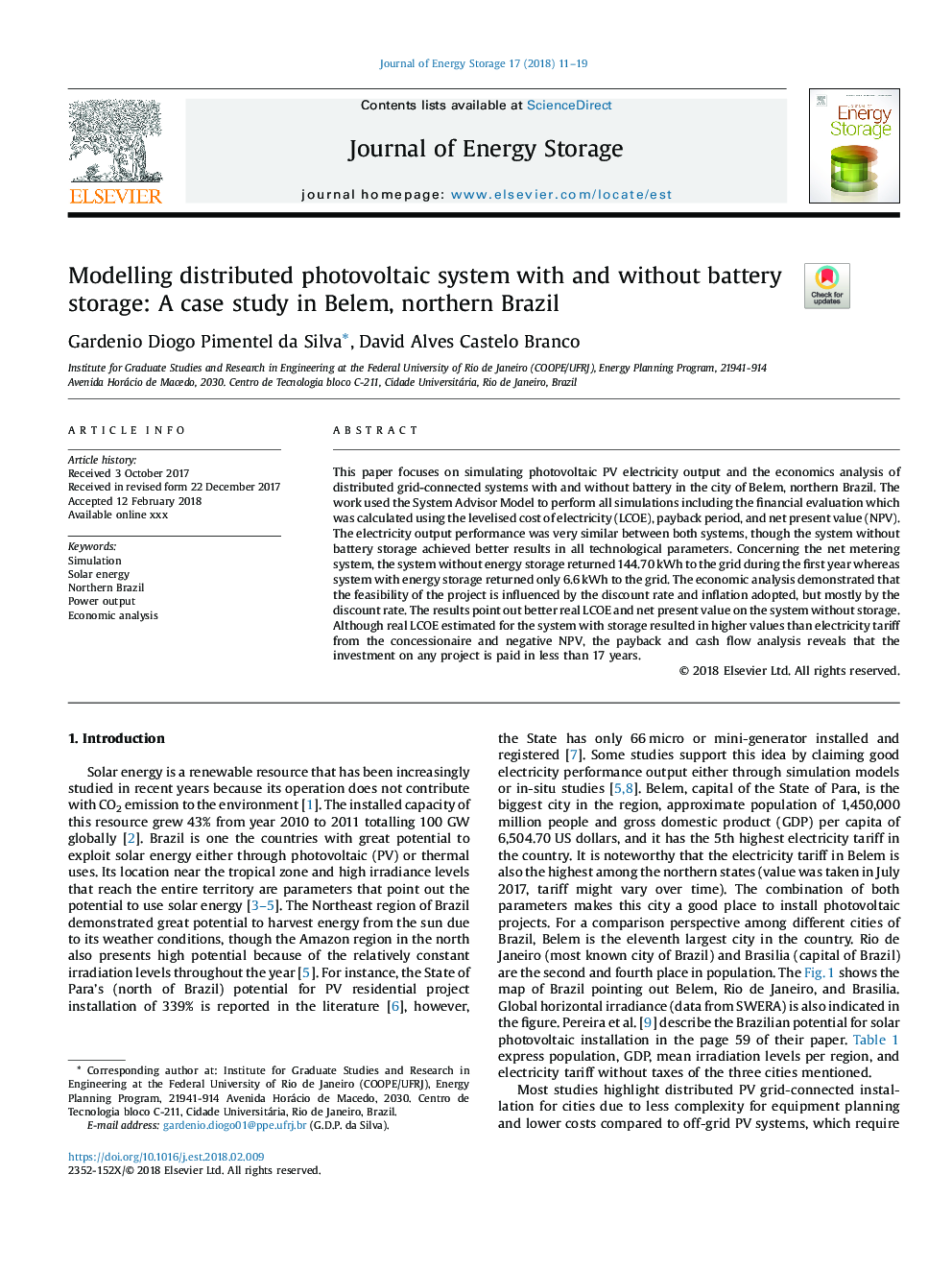| Article ID | Journal | Published Year | Pages | File Type |
|---|---|---|---|---|
| 7539823 | Journal of Energy Storage | 2018 | 9 Pages |
Abstract
This paper focuses on simulating photovoltaic PV electricity output and the economics analysis of distributed grid-connected systems with and without battery in the city of Belem, northern Brazil. The work used the System Advisor Model to perform all simulations including the financial evaluation which was calculated using the levelised cost of electricity (LCOE), payback period, and net present value (NPV). The electricity output performance was very similar between both systems, though the system without battery storage achieved better results in all technological parameters. Concerning the net metering system, the system without energy storage returned 144.70â¯kWh to the grid during the first year whereas system with energy storage returned only 6.6â¯kWh to the grid. The economic analysis demonstrated that the feasibility of the project is influenced by the discount rate and inflation adopted, but mostly by the discount rate. The results point out better real LCOE and net present value on the system without storage. Although real LCOE estimated for the system with storage resulted in higher values than electricity tariff from the concessionaire and negative NPV, the payback and cash flow analysis reveals that the investment on any project is paid in less than 17 years.
Related Topics
Physical Sciences and Engineering
Energy
Energy (General)
Authors
Gardenio Diogo Pimentel da Silva, David Alves Castelo Branco,
